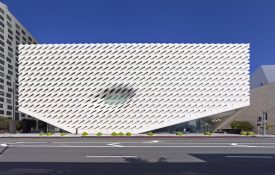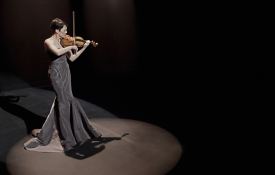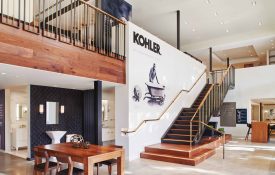CSQ Tell me a little about your background and your childhood.
Karin Liljegren I grew up in a traditional suburban New Jersey neighborhood with a “Beaver Cleaver” upbringing. I was obsessed with New York City and would try to sneak away and visit there as often and as best I could. I loved the City and always wanted to get out of the suburbs as soon as I possibly could. I remember knowing I was going to be an Architect by the age of 17 but looking back I truly had idea what that really entailed.
CSQ How did you come to work in design within the real estate industry?
KL I was always interested in how spaces made me “feel.” I loved beautiful spaces or designs that were bold and unique and I was often told early on by male superiors (and a pair of male professors) that I should be an interior designer and not an Architect. This made me furious and decided then and there that I would show each of them someday.
CSQ What was your professional career like prior to the founding of Omgivning?
KL I started working with small architecture firms at the age of 17 before I went to University of North Carolina at Charlotte for my undergraduate studies in Architecture. After North Carolina I came to Los Angeles to attend UCLA for my Masters in Architecture. In 1994 I started with Killefer Flammang Architects where I worked for about 15 years. My bosses at KFA were the type that doled out responsibility and autonomy to those that wanted it and showed the skills and passion to take on such responsibility. Thanks to this management style, I had the opportunity at KFA in 1999 to work on the first “Adaptive Reuse Ordinance” project for Tom Gilmore. The project was a conversion of 3 existing buildings in the Historic Core of DTLA to live/work housing. At that time, without exaggerating, the buildings in the historic core were essentially all empty. I then oversaw KFA’s Adaptive Reuse division and 12 historic high rise building conversions which led me to develop an obsession with Downtown Los Angeles’ revitalization in every way.

The Omgivning team atop the Broadway Trade Center in Downtown Los Angeles
CSQ What was the impetus behind founding Omgivning and what were your goals from the jump?
KL Around 2008 and 2009, at the height of the recession, I got divorced, sold the house that we built, moved to Downtown Los Angeles as a single mom and started my own firm, Omgivning. I had this unwavering drive inside of me that was pushing me forward. It seems crystal clear now, but at the time it required an enormous amount of “letting go” and “trying to listen to myself.” I had no fear of failure but I was also wasn’t sure what I wanted. I just kept moving forward. “Omgivning” is a Swedish word that means – “the way a space feels” and I used that term to combine architecture and interior design – two things that are very important to me – and have them work together in unison.
CSQ How has the company evolved since its founding and how have you grown as a leader?
KL Omgivning is now a firm of 25 architects and interior designers. We specialize in existing (often historic) buildings or spaces and their conversions to new use and new life. At Omgivning, our team oversees the process and management, along with the technical aspects and the design of how the spaces feel when they are complete. We have touched in one way or another, 250 buildings in the Downtown Los Angeles area as local experts who live, work, and play in the area.
CSQ What about the work you and your team are doing most excites you?
KL We love the diversity of the projects we are working on. We do projects as small as a 500 square foot café or bar to a project as large as a 1.8M square foot adaptive reuse project that will house more than 1,000 apartments, a food hall, office space, and restaurants. All of our projects help inform each other. When we design a singular restaurant, we understand all aspects of the space from how it needs to be laid out for maximum functionality to how a grease interceptor or exhaust system need to work. On the flip side, when we work on a large core and shell project with many restaurants and a food hall, we understand how to make that space work as well and can build in flexibility so that when a tenant is signed, there will be a streamlined process to the build it out.

A rendering of Omgivning’s work at the Sears Landmark Building in Boyle Heights, California
CSQ Where do you see Los Angeles real estate evolving in the coming years?
KL Los Angeles has historically had a fear of becoming a city with dense areas that cause residents to use mass transit instead of their cars. I think the tide has turned and more and more people are finally embracing this possible future. Los Angeles must vertical or infill underutilized lots and buildings. Spreading horizontally is no longer a viable option. This upward trajectory is critical to Los Angeles’ growth as the city continues to grow and becoming a global livable city. The development community used to live by “you build it and they will come.” Today I think developers are understanding the value of great design and will continue to do so in the future. There is too much competition out there in today’s world and the average consumer is significantly more informed about good design and thus demands it.













































